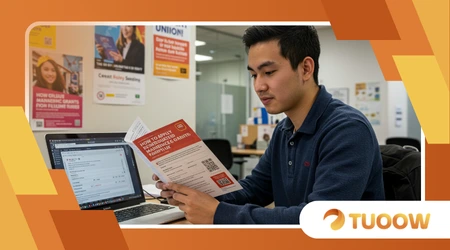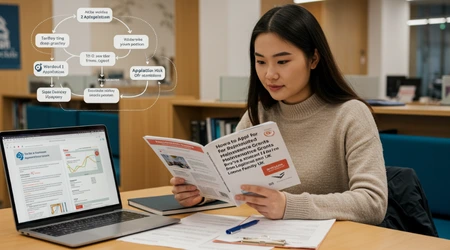How to Apply for Reintroduced Maintenance Grants if You’re a Student from Low-Income Family

The reintroduction of means-tested Maintenance Grants marks a significant, welcome shift in UK higher education funding policy. For students from low-income backgrounds, these grants which, unlike loans, do not need to be repaid are a lifeline.
They directly tackle the cost-of-living crisis currently challenging student finances. Understanding Apply for Reintroduced Maintenance Grants is essential, as the process requires precise, timely action and meticulous documentation. Don’t let bureaucratic friction cost you thousands in non-repayable aid.
This definitive guide breaks down the eligibility criteria, the application workflow, and the critical deadlines for the 2025/2026 academic year.
We cut through the complexity of student finance to ensure you secure the maximum support available. This grant reintroduction signals a renewed commitment to widening access, making your due diligence absolutely critical.
The Policy Shift: Why Maintenance Grants Matter Now
The return of Maintenance Grants corrects a long-standing financial burden on the poorest students. Their reintroduction acknowledges the inadequacy of loans alone in covering living costs.
Loans vs. Grants: The Fundamental Difference
Student loans often leave graduates saddled with substantial debt before they even enter the workforce. Maintenance Grants, however, offer non-repayable financial support directly addressing daily expenses like rent and food. This distinction is vital for minimizing post-graduation financial anxiety.
This unburdened capital allows students to focus on their studies instead of high-stress, part-time work. It’s an investment in educational equity, aiming to remove financial barriers to degree completion. The grant system is designed to stabilize student life.
The government recognized that the student loan system, while essential, exacerbated financial hardship for those unable to rely on parental support. Grants restore a measure of dignity and stability to the student experience.
++ Travel Costs Assistance for Students in the UK
Eligibility Essentials for the 2025/2026 Cycle
Eligibility is strictly determined by household income, not the student’s personal income. To apply for Reintroduced Maintenance Grants, you must meet precise income thresholds, typically aligned with the lowest national brackets. The Student Loans Company (SLC) assesses this based on the previous tax year.
For the 2025/2026 academic year, the precise household income threshold for maximum entitlement will be updated, but generally targets those below the lowest £25,000 threshold. Partial grants are often available on a sliding scale above this. Students need to check the official SLC website for the current, exact figures now.
Crucially, the student must ordinarily be a resident in the UK (England, for SLC-governed grants) and be pursuing a first degree. Scotland, Wales, and Northern Ireland operate under separate, usually more generous, grant systems.

The Application Workflow: Precision is Power
The process to Apply for Reintroduced Maintenance Grants is integrated with the standard Student Finance application. Accuracy and speed are the two most important factors for success.
The Unified Application Portal
Students must first apply online via the Student Loans Company (SLC) portal. There is no separate application for the Maintenance Grant; eligibility is determined automatically during the assessment for the Tuition Fee Loan and the Maintenance Loan.
Also read: Benefits of remote working in the UK: Home Office, Allowance and Travel Allowances
Declaring Your Income Information
The key step is completing the “Household Income” section accurately. If the student is under 25 and not financially independent, they must provide the income details of their parents or guardians. This requires parents’ National Insurance numbers and their income from the relevant tax year.
Any delay in parental submission stops the entire application process dead. It’s the most common reason for students missing deadlines and is why planning is so vital. Ensure parents are ready to provide their P60 or self-assessment tax return details immediately.
Read more: NHS Reforms: What Citizens Need to Know
The Evidence Demand: Why Documentation Matters
The SLC will request specific evidence to verify the declared household income. This is where many applications falter. Documentation must match the tax year specified.
If parents are self-employed, the process requires submitting certified accounts, which takes longer. Students should proactively gather tax returns and P60s immediately after applying online.
This readiness to provide verifiable evidence determines whether you Apply for Reintroduced Maintenance Grants successfully and swiftly.
Statistic: Data from the SLC in 2024 showed that applications requiring manual income verification (i.e., those missing documentation or having discrepancies) took an average of 35 days longer to process than those completed digitally with matching HMRC data.
Strategic Considerations for Maximizing Your Grant

Beyond simply filling out the form, students from low-income families must employ strategic financial planning to maximize their grant entitlement.
Understanding Non-Taxable Income
Household income assessment generally includes earnings, investments, and some benefits. However, certain income sources are explicitly excluded from the assessment, which can keep the household income figure below the grant threshold.
Income Not Included in the Means Test
Examples of income often excluded from the means test include: specific disability benefits (e.g., Personal Independence Payment), some housing benefits, and student finance received for other children in the family. Carefully reading the SLC guidance on excluded income is vital for maximizing eligibility.
This is where informed diligence pays off handsomely. It’s a key tactic in How to Apply for Reintroduced Maintenance Grants efficiently. Misunderstanding these exclusions can unnecessarily push a family over the eligibility threshold.
The Dependency Status Trap
Students over the age of 25 or those who have supported themselves financially for at least three years may qualify as independent students. This means only their income is assessed, potentially bypassing parental income entirely.
Students who believe they qualify as independent must provide rigorous evidence, such as P60s, benefit award letters, or tenancy agreements, covering the specified three-year period. This independent status is a major factor in determining How to Apply for Reintroduced Maintenance Grants with the highest chance of success.
Analogy: The Maintenance Grant application process is like a complex customs declaration. You must declare every item (income source) accurately, understand which items are duty-free (excluded income), and ensure all documentation (tax forms) is presented immediately. Any discrepancy guarantees a long, costly delay.
Avoiding Pitfalls and Ensuring Timeliness
The most common reasons for delayed or rejected applications are simple procedural errors. Avoiding these is the final step to a successful outcome.
Deadlines and Penalties
The official deadlines for Student Finance are typically in May for the academic year beginning in September. Submitting after this date often means the student cannot receive their full payment at the start of term.
While late applications are accepted, the grant processing is slower, leading to financial hardship at the beginning of the university year. Students must Apply for Reintroduced Maintenance Grants by the main deadline, even if they aren’t fully sure of their university place.
Communication and Proactive Follow-Up
Do not wait for the SLC to contact you if you suspect there is a problem. The application status should be monitored regularly on the online portal. If the status indicates a missing document, provide it immediately.
A simple phone call to the SLC support line, referencing your Customer Reference Number (CRN), can often clarify a request that would otherwise lead to weeks of processing delay. Proactive communication cuts through bureaucracy.
Example: A student from Manchester applying for a grant found his application delayed because his father’s name was misspelled on the initial form.
A quick follow-up phone call allowed the agent to manually correct the detail, immediately releasing the grant for approval, a testament to the value of human intervention over systemic error.
UK Maintenance Grant Application Checklist (2025/2026)
| Step Category | Action Required | Critical Documentation Needed | Target Deadline |
| Preparation | Determine household income from the previous tax year. | Parents’ P60s or Self-Assessment Tax Returns. | ASAP (Prior to application) |
| Application | Complete the Student Finance application online (SLC portal). | Student & Parents’ National Insurance Numbers (NINOs). | May (for September start) |
| Verification | Submit supporting evidence immediately upon request. | Birth Certificate (for new applicants); Certified Tax Records. | Within 7-10 Days of Request |
| Maximization | Check for excluded income (e.g., specific benefits). | SLC Guidance on excluded income categories. | Before final submission |
| Follow-Up | Monitor the SLC portal status weekly. | Customer Reference Number (CRN). | Ongoing |
Conclusion: Securing Your Educational Investment
The reintroduction of Maintenance Grants is a powerful tool for social mobility, directly easing the financial strain on low-income students.
Understanding How to Apply for Reintroduced Maintenance Grants requires preparation, knowledge of income exclusions, and meticulous attention to deadlines and documentation.
Treat the application process as seriously as your university acceptance. Securing this non-repayable aid is not a handout; it is an essential investment in your future and an affirmation of your educational right.
Have you started gathering your necessary tax documents for the upcoming cycle? Share your best advice for navigating the SLC portal in the comments below!
Frequently Asked Questions (FAQs)
Q: I’m 23, but my parents support me. Should I apply as independent?
A: You can only apply as an independent student if you meet specific, strict criteria, usually being 25 or over, married, or having supported yourself financially for at least three years.
If your parents still provide primary support, you must include their income; misrepresenting this will lead to rejection.
Q: If my parents’ income dropped this year, but the SLC uses last year’s data, what can I do?
A: If there has been a permanent, significant drop (typically 15% or more) in household income since the last tax year, you can request a “Current Year Income” (CYI) assessment.
This requires submitting evidence (e.g., redundancy letters, revised pay slips) to prove the financial change, ensuring your Maintenance Grant reflects your current need.
Q: Does receiving the Maintenance Grant affect my Maintenance Loan entitlement?
A: Yes. The Maintenance Grant is awarded instead of an equivalent portion of the Maintenance Loan. Since the total amount of support (Loan + Grant) is capped, receiving a grant reduces the amount you can borrow as a loan. This is a crucial point for maximizing your non-repayable funds.
